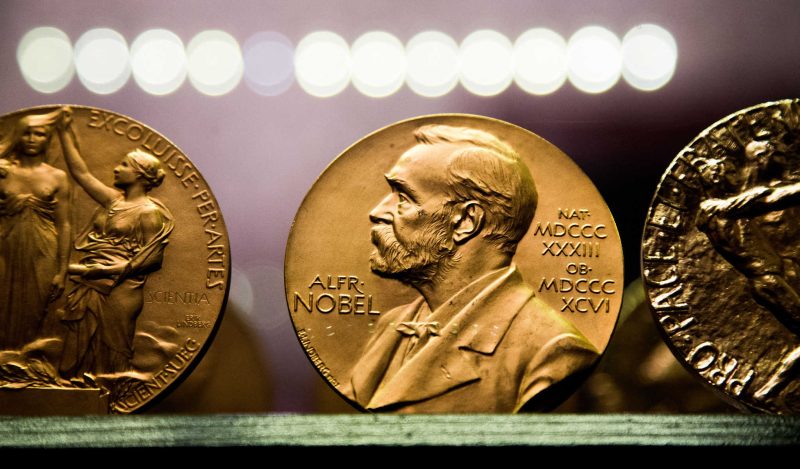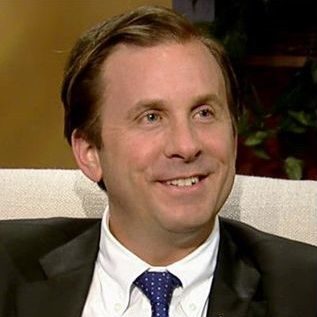In the early 1920s, radios were the pricey, must-have gadgets of the day. And as all transformative market goods are, they started out expensive only for RCA (the Apple of its time) to render common what was once a luxury. One hundred years later, those with internet access can listen to radio stations around the world for free. How things change.
Capitalistic advances like the radio came to mind while thinking about Ben Bernanke being awarded a portion of the Nobel Prize. Bernanke believes economic growth causes prices to rise. As he told Cato Institute co-founder Ed Crane in 2005 during a one-on-one lunch, growth is “inherently inflationary.”
Actually, it’s the opposite. Economic growth is a consequence of investment, and investment is all about producing exponentially more as prices continue to fall. All goods that we covet, from cars, to computers, to radios, start out nosebleed expensive only to decline in price as investment in production efficiencies pushes their prices down. Rest assured that in Bernanke’s lifetime, private flight will become common.
That’s the way of things in a real world that Bernanke is only vaguely in touch with. Imagine one of the modern faces of economics believing growth causes inflation. Worse, consider the bigger meaning of all this. Bernanke is wedded to the false notion that country economies are limited by the supply of labor and production capacity within their borders, and as a result, Bernanke believes it’s the job of central bankers to centrally plan job loss and economic sluggishness so that economies don’t “overheat.” Look it up. Yes, he believes this stuff. In reality, every market good and service is the consequence of global labor and capacity inputs, such that there’s never a scenario of the “gap” in “output” being filled.
If we ignore that the Fed’s power to manage the economy toward growth or decline is vastly overstated, we can’t ignore that economists like Bernanke believe that central banks can and should put people out of work to keep inflation in check. Yet Bernanke is now a Nobel Prize winner. How embarrassing for economists, and how embarrassing for the Prize.
To which some will say that it wasn’t his belief in the discredited Phillips curve that won him the Prize, rather it was his “Insights That Helped in Financial Crisis” (part of a Wall Street Journal headline about his award) that resulted in his latest honor. Fair enough, in a sense. Bernanke won the prize based on “a 1983 publication establishing bank failures as key to the transformation of an economic recession into the most severe depression of the 20th century.” The problem here is that Bernanke’s publication is as easy to dismiss as his deep belief that growth has an inflationary downside.
Indeed, as is well known, capital is borderless. It always has been. We borrow money for what it can be exchanged for, which is a reminder that the only limit to credit is production. Please think about this with Bernanke’s belief that struggling banks brought on the 1930s. Such a view doesn’t stand up to the most basic of scrutiny.
That’s the case because finance has never been limited to banks, and certainly wasn’t limited to US banks in the 1930s. Better yet, precisely because US innovation has always been so impressive, the US has long been a magnet for the world’s savings. Applied to the 1930s, even if it had been true that a “tight” Fed hadn’t liquefied banks enough, the reality is that global capital inflows and domestic non-bank sources of capital would have made up for the Fed’s alleged stinginess between breakfast and lunch.
Bernanke has long championed himself as a “Great Depression” expert, but his analysis reminds the mildly sapient that he learned all the wrong lessons from a decade of relatively slow growth. Missed by Bernanke is that “depression” in the 1930s was the government intervention.
As the US economy fell into a mild, would-be-economic-revival born of the slump (it’s during downturns that the individuals who comprise an economy fix what they’re doing wrong), the Hoover and Roosevelt administrations responded with record tariffs on 20,000 foreign goods, massive increases in the tax that is government spending, an increase in the top individual tax rate from 25 to 83 percent, levies on retained corporate earnings of up to 70 percent, major new regulation, and a 59% devaluation of the dollar.
Left alone, recessions are the cure. The problem was that the political class tried to medicate what was healthy.
Bernanke fell hard for the medication part. Fast forward to 2008, a falling dollar under the impressively inept President George W. Bush had instigated what Ludwig von Mises referred to in Human Action as a “flight to the real.” Yes, presidents get the dollar they want, Bush wanted a weak one, and a falling dollar drove massive consumption of housing over investment in new ideas.
That the US economy slowed as a result of the above was no surprise. Furthermore, the markets weren’t surprised. Figure that they relentlessly process all known information and were doing just that. Repeat it over and over again that errors are the norm in any economy, and they could never cause a “crisis.” Enter Bernanke. With a “whatever it takes” (Bernanke’s words) mantra, the Fed Chairman was “determined to do everything I could, along with my colleagues, to try to prevent the financial system from melting down.” Yet people – including deep-thinking economists – to this day scratch their chins while discussing the “causes” of the 2008 crisis! You can’t make this up.
The reality is that market actors were minute by minute pricing the errors that are part and parcel of any mixed, or market economy, only for experts like Bernanke, Bush, and Henry Paulson to substitute their highly limited knowledge for that of the marketplace. That “crisis” followed intervention was a statement of the obvious. In other words, Bernanke was the crisis. Nice job, Nobel Committee.
Republished from RealClearMarkets
Join the conversation:


Published under a Creative Commons Attribution 4.0 International License
For reprints, please set the canonical link back to the original Brownstone Institute Article and Author.









